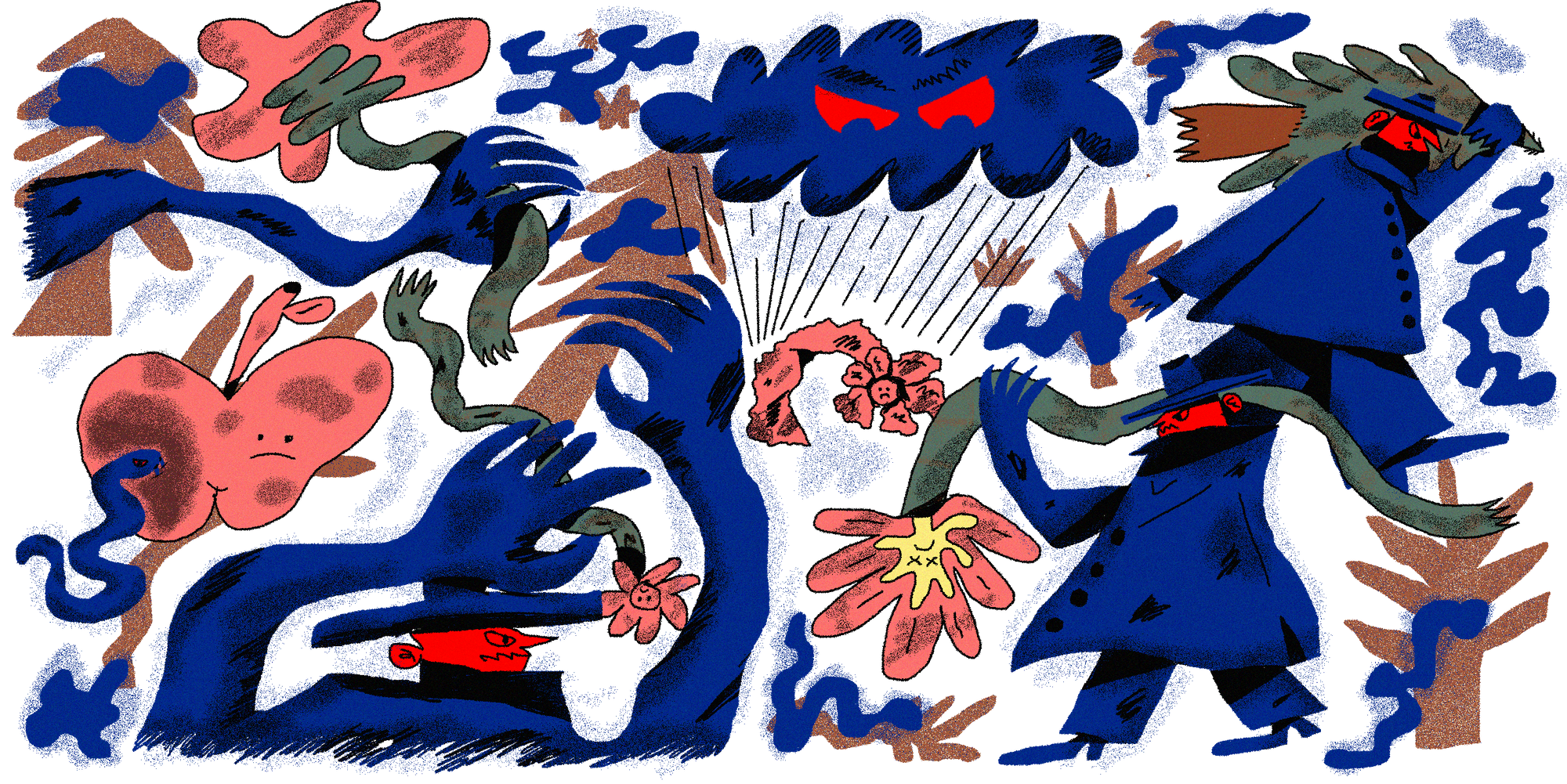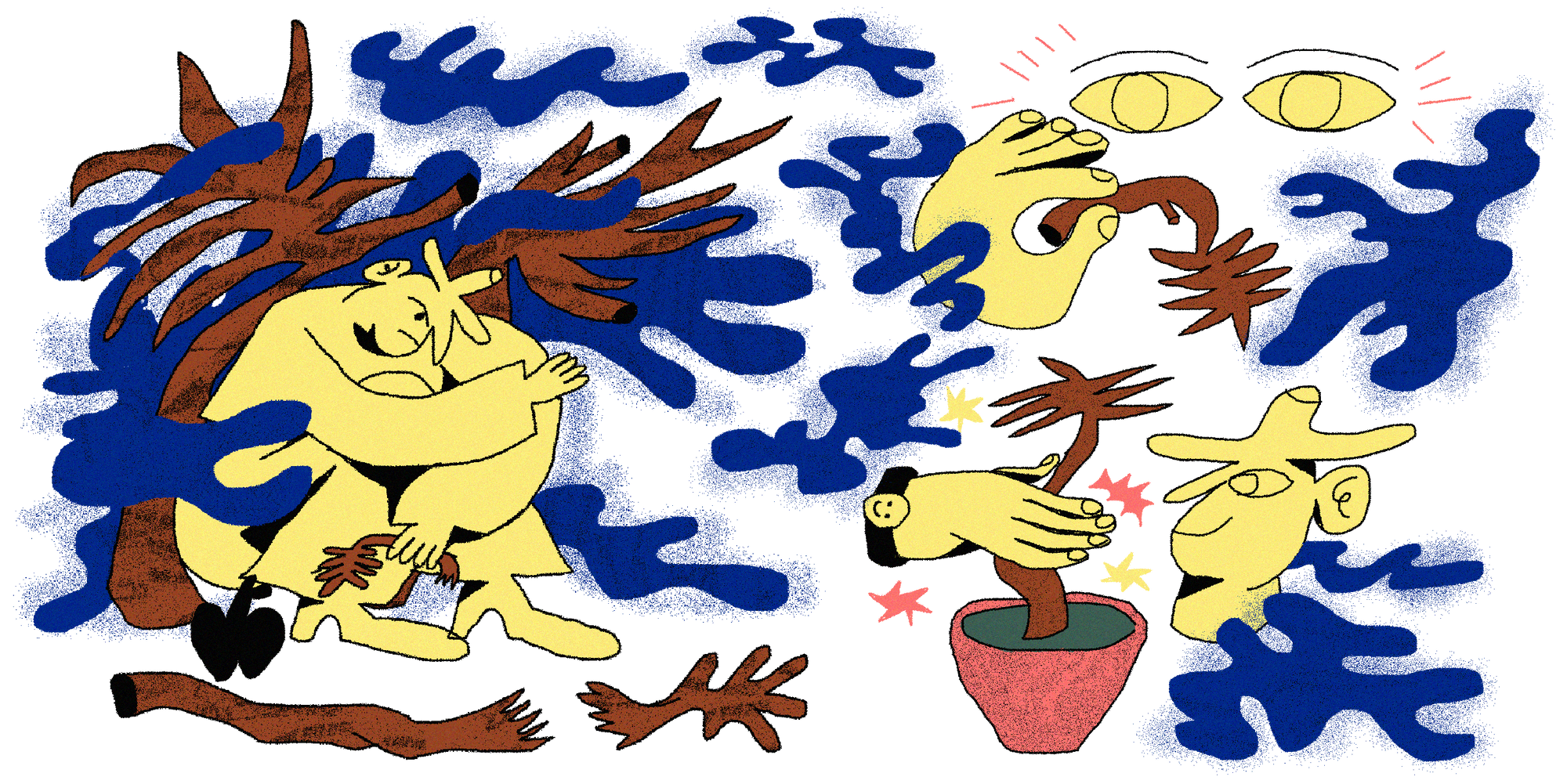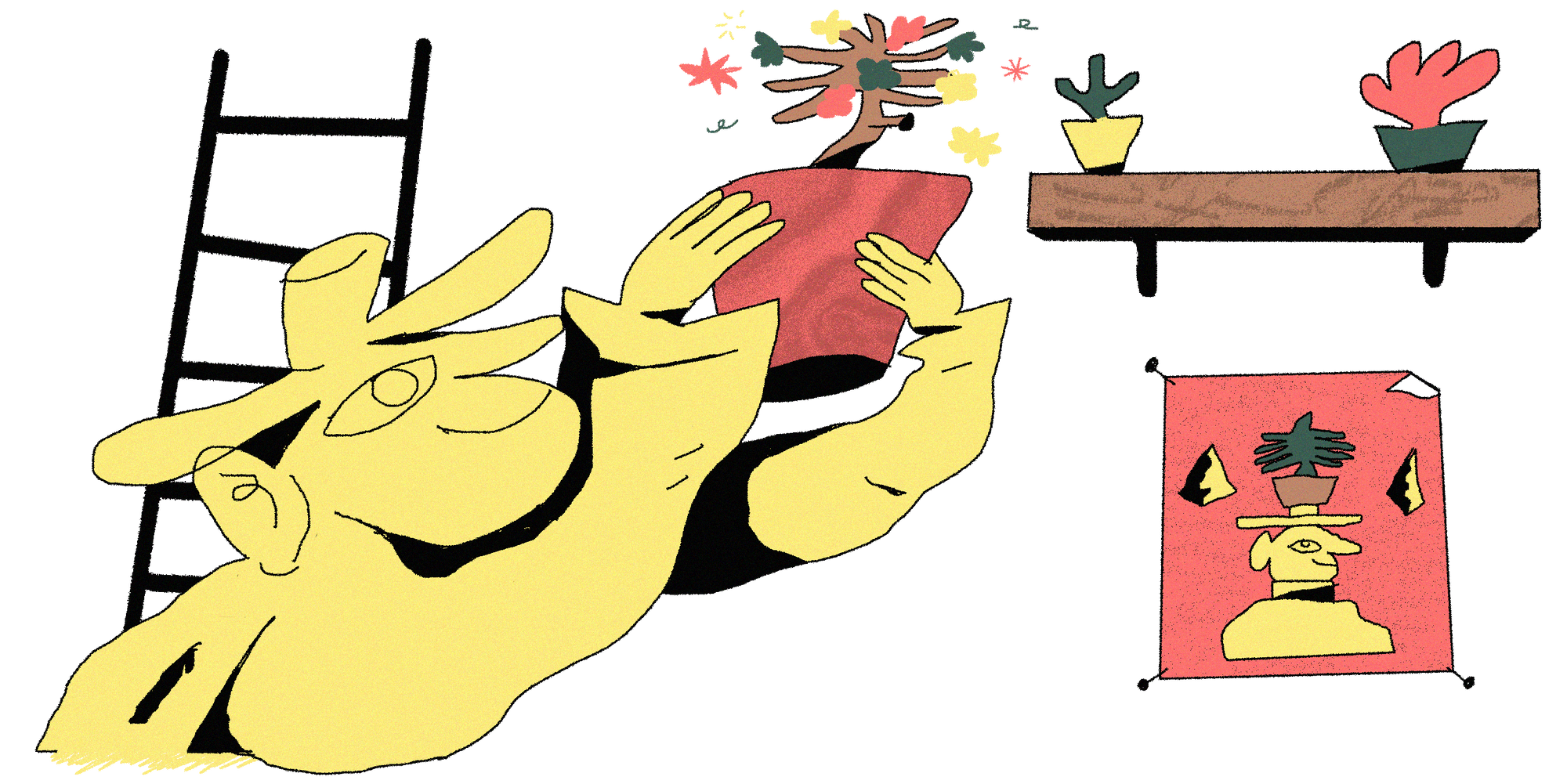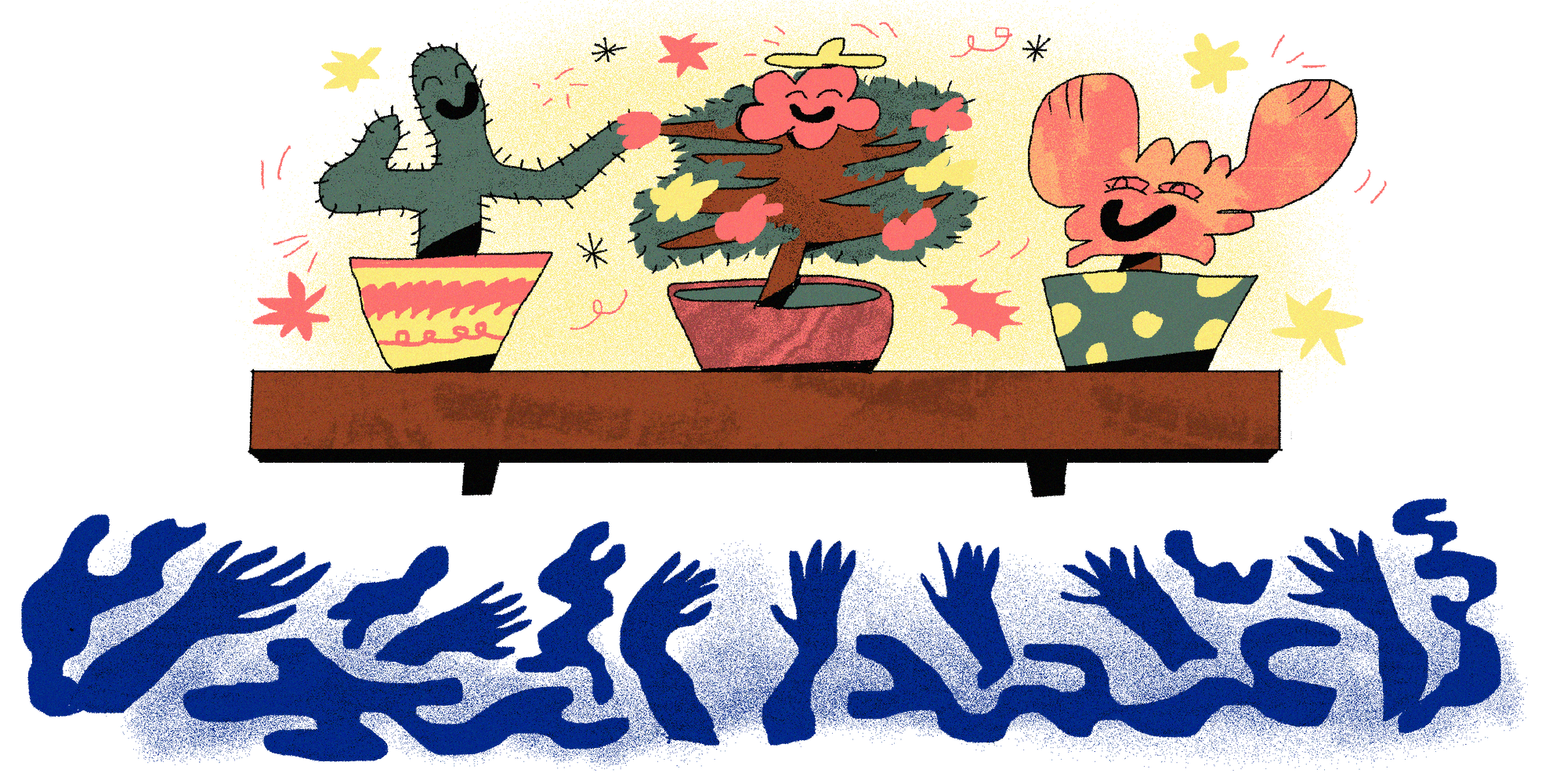How to recession-proof your creative practice
Introduction
You’re racing to finish your… (immersive installation, play, commercial, movie, whatever). You’re desperately seeking that perfect marketing partner. You’re flying to Cali or Miami or Europe to nail that incredible project. As a creative person living a creative life in the past decade, your one goal has been to grow. So you’ve probably never been faced with anti-growth—a recession. Actually, you really don’t even want to think about it. Way too busy, right?
Me too. When I finished my “100 years of grad school,” I was ready to jump into life as a political science professor. But there was a full-blown recession going on and, to my shock, no teaching jobs. A truly dismal year followed this hard realization, and riddled with angst and anxiety, I was forced to sell my precious cameras to buy Ichiban ramen and crash in my old bed at my parents’ house.
And then, amidst the chaos of recession… I found journalism. Turns out what I loved most about academia—seeing patterns, analysis, writing, context—made me a better journalist than I would have been as an academic. In crisis, I “reframed” myself (more on reframing later).
Over my career, I’ve lived through six recessions and learned two big lessons: 1) fear and anxiety will paralyze you if you are not prepared, and 2) a crisis that forces you to stop, just stop, can be a meaningful moment to learn and prepare for your next stage. In hindsight, recessions (and other types of crises) pushed me into my most creative roles—book writer, designer, magazine launcher, team leader, creativity consultant, professor, and now mentor at the art/tech incubator NEW INC.
Crises can be scary, but they can also be regenerative. This guide will prepare you for the VUCA—Volatility, Uncertainty, Complexity, Ambiguity—a recession brings into your work and your life.
— Writer, professor, and mentor Bruce Nussbaum
So what is a recession, anyway?
Technically, a recession is a downturn in the economy that lasts nine to twelve months. What happens? Business freezes up. Growth stops and maybe even falls. Stocks crater 20% to 30%. Property prices falls. Sales drops. No one wants to hire you. No one wants to pay you. Recessions are a killer, literally. Think Schumpeter—Creative Destruction. Projects, businesses, and plans die abruptly. People freeze in the face of recession because they are unprepared.
…But here comes the good news
Creative people have the BEST skill set to successfully surf a recession. Take a moment to think about it: Who can best navigate uncertainty? Who can meet unexpected challenges? Who can pivot and switch to plan “B” in a second? Who already tends to work inside of crisis mode a lot of the time? Who can visualize possible futures? You. Artists and other types of creative people have the skills and values that will help you ride the recession out (and even prosper from it)—except, perhaps, experience. It’s your first recession. A scary new game with new rules. You can’t even tell a recession is on its way, can you?

The “tell” of an impending recession
This is what to look for, or the “tell” of recession. Start with longevity. Economies run on cycles. They ALWAYS crash and burn eventually. This current economic cycle is the longest in US history. It is 121 months old. Ancient. It’s like having a 13-year-old dog. You love that doggie but you see the grey fur, the painful, halting walk, the lack of appetite, the low energy. In economics, the signs of healthy vigor are called “animal spirits.” These days, economic animal spirits are showing signs of aging and worse. Capital investment is weakening. Corporate earnings are sliding. Nervous chatter fills the social spaces where CEOs gather. Trade wars with China, Europe, Canada, and Mexico increase uncertainty and hammer exports. Google, Facebook, Apple, and Twitter are being pulled into a Cold War with China and a political battle in Washington. More uncertainty, more hesitancy, more pullback. All “tells” of an approaching recession.
The biggest tell, however, is the financial market. It’s pretty bonkers out there these days. Ever hear of an “inverted yield curve?” Probably not, but it is a powerful signal of danger ahead and it is blaring at us today. In a healthy and growing economy, interest rates for long-term bonds are higher than rates for short-term paper. In a weakening economy, short-term interest rates go higher than long-term rates. That’s what we have today.
One last “tell:” Hot money chasing cool startups that don’t have any profits is a classic predictor of recession. Uber and Lyft don’t make any money, but their IPOs (Initial Public Offerings) sold out. The WeWork IPO disaster is a classic example of “late cycle” financial trouble. Its value was pumped up to $45 billion by a couple of big money guys, and then collapsed to 1/3 of that valuation before being withdrawn entirely once investors had a chance to dig into the company books.
My best guess is that a recession will hit us after the next presidential election—maybe late 2020 or 2021. So, now is the time to get out of your COD, your Cave of Denial. You’ve had years of pretty good economic times and just assume it will go on forever. But it won’t and it’s time to prepare.
Strategy: Cash please.
Recessions are existential threats. You have to prepare in advance for a full year of no work. No income. No gigs. No projects. Worse, you have to get ready for clients to pull out of contracts, to renege on promises, to not pay you for work already done. Everyone will scramble to survive and it will get ugly.
So start saving cash right now—enough to keep you going for a full year. You have to be brutal with yourself and assume no income at all. So please, please, please take your head out of your screen now and do the math. How much do you need for rent? How much do you need for food? Transportation? If you run a business, how much do you need to pay your partners/employees? Will you even be able to pay them?
If you do own a business, it is much better to bring everyone (partners and staff) into the discussion of recession now—before it hits—and talk about the “what ifs.” It’s the right thing to do, and you may be surprised at how much people around you can suggest ways to save money. Sorry, this is tough and probably something you’ve never done before, but recession is about survival. You’re going to have to toughen up.
Editor’s note: For more tips on financial planning for artists, see our guide on the topic.

Strategy: Be nice
Before a recession, it’s smart to be extra nice to your clients. Of course, you’re always pretty nice to them, but be extra nice when you can, because when the recession hits and they start to lag on their payments to their consultants, vendors, and creators, you want to be the very last business they stop payment to. You want them to pay you even after they stop paying others. Yes, recession is savage.
So if you’ve been working together for a long time, remind them how much you appreciate working with/for them. If you’ve been haggling over the price of a contract, consider making a compromise in favor of keeping them happy. And try to think of ways to save THEM money—something they haven’t thought of before. Being extra nice may always make you a better person, but in a recession it can save your business’ butt.
Strategy: Be mindful, and seek out meaning
Recessions are a meditative moment. I know this sounds nuts, but it’s true. For the first time in many years, as a person normally shuffling between gigs, you are going to have tons of time on your hands. You can either spend it angsting at your fate, paralyzed with fear, or you can use the weeks and months of downtime to ponder your practice, and your life.
When viewed in a positive light, recessions can be a gift of time to examine what is meaningful to you, your art, your business, and your world. Awhile back, I wrote a design story at Business Week about how the technology companies IBM, HP, and Lenovo were competing for business from the rising middle class in China. The two American companies (IBM and HP) marketed the high-tech aspects of their PCs—the speed, the features, all the stuff that American and European consumers love. On the other hand, Lenovo, a Chinese company, did something else. It learned that the Chinese were buying PCs as wedding presents, as the machines were viewed as symbols of success. So Lenovo changed the packaging of its PC to look more like a wedding gift, and ended up taking the market share. Lenovo understood what was truly meaningful to their consumers. It mined for meaning and harnessed that knowledge to succeed.
So: take the free time that recessions give you to actively research what is deeply meaningful to your clients, your audience, your collectors. Or, reach beyond your edges into other spaces, and discover deeper meanings that people are neglecting and ways to satisfy them. And do a little anthropology on your own practice, too. Do you really want to continue doing what you’ve been doing for the past 10 years with the same people? Be brave. Mine for meaning in your work, in your life—and then chase the path that feels most meaningful to you, and to those you work with.

Strategy: Frame/reframe
The practice of reframing can change our perspectives, our work, and our lives. It can move us from mindfulness to transformation. In the weeks and months of a recession, when you don’t have work, you can work on reframing yourself. Here’s how it works.
We see the world through our preferences, our biases, our learning, our history, our culture. Consciously clarifying your frame of reference—that is, understanding your way of seeing the world——gives you power. Because once you really understand your frame, you can reframe. We can reframe how we interpret the world (our narrative frames), how we interact with each other (our engagement frames), and how we visualize our futures (our what-if frames). We can reframe our work, our practice.
Here’s how I learned about reframing—and how I got reframed. I was on a flight back to New York after covering a boring European finance conference, asleep in an aisle seat, when liquid splashed into my face. I panicked, of course. My glasses were off, I looked around, thinking a leak had sprung in the plane. Gradually, I realized that people on both sides of the aisle were jumping up also, rubbing their faces, dazed. I saw a small figure running down the aisle, with people jumping up as it passed. Then, the figure turned around and came back toward me! As it came closer and closer, I realized it was a little girl, around two maybe. She was holding a bottle and she was squeezing it, sending milk into the faces of the people around her. She was able to hold that bottle with her little hands because the bottle had a hole in it, like a donut. That hole allowed her to hold the bottle, feed herself, and torture adults. The little girl was laughing and having a terrific time.
In that moment, I realized that someone had reframed a traditional milk bottle to empower a two-year-old girl. Instead of being fed, she could feed herself. Instead of being dependent, she was independent. She was a terror!
I wondered, Who designed that bottle in such a revolutionary way? And why was I covering boring banking stuff when I could be covering exciting design evolutions? Turns out thousands of readers at my magazine, BusinessWeek, also wanted to know the couple with kids in the Midwest who reframed the milk bottle. So I reframed as well, and switched my beat from economics to design. In that process, I totally reframed my career. I found new meaning, reframed, and chose a new path.
Editor’s note: For more tips on reframing and choosing a new path, see our guide on how to reinvent yourself.

Strategy: Serious Play
Recessions begin with widespread pessimism and survival, and end with optimism and opportunity. As the recession ends, those who survive make plans to grow again. Apple is famous for developing new products during a recession and launching them just as it ends. The first iPod was launched in October 2001, just as an eight-month recession was coming to an end.
To get to your own iPod idea, try this creative practice—Serious Play. Learning by playing has its roots in the kindergarten, Montessori, and Waldorf children’s school movements of 19th-century Europe. But it was “Homo Ludens,” “Humans the Players,” by Johan Huizinga in 1938 that showed how important play is to generating culture. In play, you can change the rules of the game or even create a whole new game. Plus, you can change the playground, the space where you play.
Play is actually one of the most productive things you can do in a recession. My favorite game is called “match up.” Much, maybe most, innovation involves just two steps: Take an old product or business, and match it to a new technology. Amazon began when Bezos took book selling in stores and stuck it on the internet. Zuckerberg took physical photo sharing and poured it through the internet. Listening to music? Hook it up to the net. Transportation? Zip Car, Uber. Renting? Airbnb.
Of course, you don’t need technology to play. Eddie Huang took the traditional Taiwanese meat-filled gua boa, started filling it with Niman Ranch pork belly and Cherry Coca Cola, and named his restaurant Baohaus. I just had my first iced cardamom coffee float at Hampton Chutney in Amagansett. How did these ideas come about? Play.
Serious play is a method of designing the future. And that is how you should spend your time in recession: designing your future.

